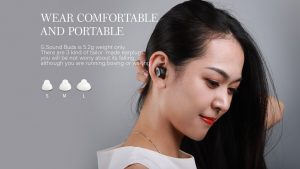 If you’ve read our Hearing Aid Buying Guide, you already know about the technology that goes into a hearing aid, and how much each technology level should cost. For many, the next step is figuring out how to pay for hearing aids. Navigating this part of your hearing health journey can be tricky, so we always advise speaking with your local hearing health provider regarding your financial options. The following are a few different options that may assist in purchasing your new aids.
If you’ve read our Hearing Aid Buying Guide, you already know about the technology that goes into a hearing aid, and how much each technology level should cost. For many, the next step is figuring out how to pay for hearing aids. Navigating this part of your hearing health journey can be tricky, so we always advise speaking with your local hearing health provider regarding your financial options. The following are a few different options that may assist in purchasing your new aids.
Out of Pocket
This is usually the first place people start when determining how to pay for hearing aids. Concept accepts cash, checks, and major credit cards, but if you are like most Americans needing some help paying for hearing aids, there are other options out there.
Financing
Using a low- to no-interest financing option made especially for health care is another option. Breaking down the cost of hearing aids into small monthly payments can also be helpful, depending on your financial status. At Concept, we offer financing based on your credit through Wells Fargo and CareCredit. Some plans through Wells Fargo offer monthly payments as low as $34* per month.
Leasing
Concept now offers hearing aid leasing with fixed, low monthly payments that are worry-free. Leasing hearing aids gives you access to brand new hearing aids every three years without raising your monthly payment or added out of pocket costs. Monthly lease payments start at $50 to $87 per hearing aid or $100 to $174 per pair of hearing aids.
Health Insurance
Many states, including Iowa, do not require that health insurance policies include coverage for hearing aids for adults.1 If your health insurance policy has coverage for hearing aids, there are some important things to know.
“The availability to use insurance to help pay for hearing aids is on a case-by-case basis,” Concept by Iowa Hearing Aid Centers’ President and Owner, Taylor Parker, explains. “The best thing an individual interested in purchasing hearing aids can do is give Concept their insurance information before their initial hearing screening, so we can research IF and how much their insurance covers hearing aids. Doing this ensures that we have that information ready for them when they arrive for their appointment.” And we can save you time by letting our experienced hearing professionals speak with the insurance companies on your behalf and get all the required information.
Flex Spending Accounts (FSA) or Health Savings Accounts (HSA)
FSA or HSA accounts may be used to cover the cost of hearing aids and hearing aid batteries. You can put up to $2,650 into an FSA per year for each employer you have.2 With a little planning, you can make sure you are putting away enough to cover the cost of the hearing aids that are the best fit for your loss. For example, if you are married, both you and your spouse can put $2,650 into separate FSA accounts and use the funds from both accounts to cover the cost of hearing aids.3 In addition, if your FSA has a grace period, you can use the funds from the prior year and the current year during that time to pay for hearing aids. You can use your flex spending or health savings accounts each time you are in need of hearing aids – so upgrades can be covered, too.
Tax Refunds and Deductions
If you are like most Americans, you use your tax refund to cover major expenses. You can also use expenses for hearing aids to increase your tax deduction. “Hearing aids, hearing aid batteries and mileage to and from your appointment may be tax deductible,” Taylor says. “To find out, take your purchase agreement to your accountant, and they will tell you, based on your personal financial situation, if any of the items are, and by how much. The deduction, and even the possibility of a deduction, is different for each situation.”
Hearing Aid Trade-In
“Concept offers a hearing aid trade-in policy that provides the biggest discount in the nation,” Taylor adds. “For current patients, we offer 50 percent of the amount paid for old hearing aids towards the purchase of new hearing aids at retail price. We also offer 25 percent off the purchase price of new hearing aids, with receipt, if the hearing aids were not originally purchased at Concept.”
Everyone’s financial situation is unique, and these are just some of the options available to you. Your local Concept Audiologist or Licensed Hearing Instrument Specialist can help you navigate these options and more during this step in your journey to better hearing.
Click the image to print and bring to your local Concept by Iowa Hearing Aid Centers clinic.
Resources:
- https://www.asha.org/advocacy/state/issues/ha_reimbursement/
- https://www.irs.gov/publications/p969#en_US_2017_publink1000204083
- https://www.healthcare.gov/have-job-based-coverage/flexible-spending-accounts/
[banner group='banner-group']



